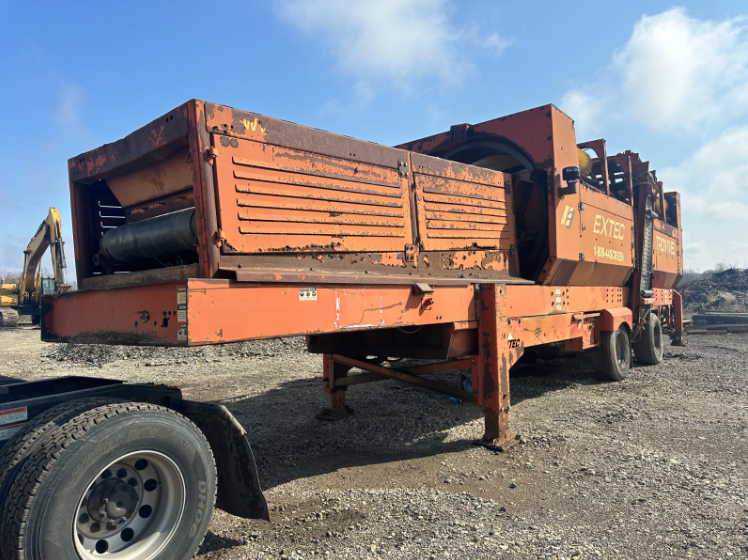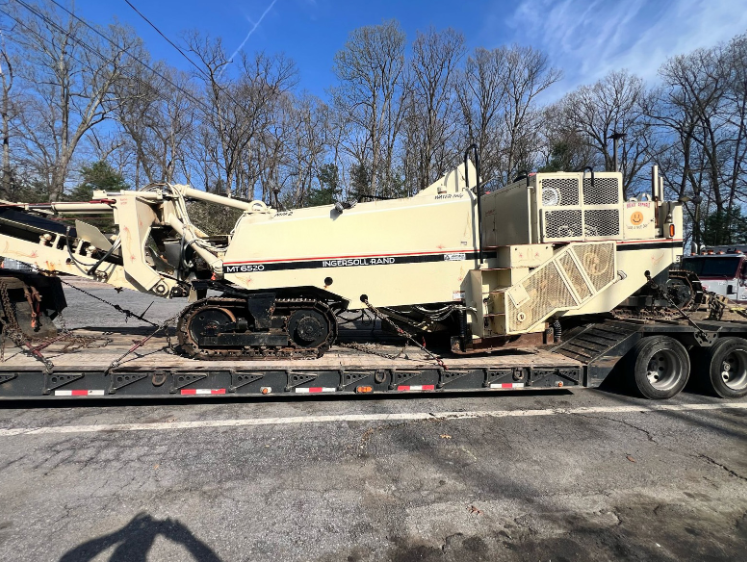Pallet shipping might sound straightforward, but the pricing? Not so much. Rates can range anywhere from $150 to $800 per pallet, depending on what you’re shipping, where it’s going, and how it’s packed (plus a few other factors which we’ll cover below).
At STT Logistics Group, we’ve helped clients move everything from single-pallet LTL shipments to full cross-country truckloads. Whether you’re moving machinery, flooring, FMCG, vehicles or custom builds, the details matter—and the right knowledge can save you thousands of dollars.
In this guide, we’ll show you:
- The biggest pricing factors (like weight, freight class, and shipping zones)
- How to spot hidden fees before they catch you off guard
- Strategies our clients use to ship smarter and pay less
Because when you understand what drives pallet shipping costs, you can start making confident, cost-effective decisions that support your bottom line.
Photo by Wayu Penpituckbut on Vecteezy: Wooden pallets stacked together in a warehouse with more pallets piled high in the background
| Key TakeawaysPallet shipping costs range widely—from $150 to $800+—and are driven by factors like weight, distance, dimensions, and speed of delivery. Freight class matters. Misclassification can trigger reinspection fees and higher rates, while getting it right keeps your budget on track. Smart strategies save money. Consolidation, flexible timing, and efficient packing all help reduce per-pallet costs. Extra fees add up. Be prepared for surcharges like fuel, accessorial charges, and seasonal rate hikes. The right logistics partner makes a difference. From accurate quoting to carrier relationships and tech tools, expert support keeps your freight moving efficiently and affordably. |
What Really Drives Pallet Shipping Costs?
Pallet shipping costs are built on a few key variables that carriers use to determine pricing. Get familiar with these, and you’ll be in a better position to plan, negotiate, and optimize every load.
📦 Weight vs. Dimensional Weight
Carriers use whichever number is higher:
- Actual weight (in pounds)
- Dimensional weight, which factors in the space your pallet takes up
Why? Because large, lightweight shipments still take up trailer space. If you’re shipping something bulky but not heavy—like foam insulation—you’ll likely be charged based on volume, not mass.
📏 Pallet Size Matters
A standard 48” x 40” pallet is your best bet for cost efficiency. It fits neatly on most trailers and maximizes space.
Oversized pallets or custom dimensions require more floor space and handling effort, which usually equals higher fees.
🗺 Distance & Shipping Zones
Every mile costs money—but crossing zone lines can cost even more.
The further your pallet travels, especially if it moves through multiple regions or hubs, the more you’ll see that reflected in the rate. It’s why a 500-mile trip in one region may cost less than a 300-mile trip that crosses two.
⏱ Speed vs. Cost
Need it there now? You’ll pay for it.
Expedited shipping can double or triple your base rate. If your cargo isn’t time-sensitive, standard delivery windows can keep costs low and carriers flexible.
⚠️ Special Handling & Compliance
Some items—such as hazardous materials, sensitive electronics, oversized machinery, or high-value goods—require:
- Extra documentation
- Specialty permits
- Trained handlers
- Secure or temperature-controlled transport
These all add complexity—and cost.
Want to avoid surprises on your invoice? Work with a broker who knows what to ask, and how to get you the best rate based on your cargo’s real profile.
Common Pallet Shipping Price Ranges
Whether you’re moving one pallet or a hundred, location and distance are big cost drivers. But how far it’s going—and what kind of handling it needs—can swing the price dramatically.
Here’s what to expect at each range:
🚚 Local Moves (0–250 miles)
$150–$300 per pallet
Short hauls are the most budget-friendly.
Carriers can complete the trip in a single day, with minimal transfers and optimized routes. Great for in-state or regional B2B deliveries where speed and simplicity are the goal.
🌍 Regional Moves (250–1,000 miles)
$250–$550 per pallet
This is where things start to vary more.
Rates depend on carrier availability, shipping zone changes, and whether you’re going standard or expedited. The difference between two carriers could be hundreds—so comparisons matter here.
🌎 Cross-Country Shipments (1,000+ miles)
$500–$800 per pallet (or more)
Coast-to-coast? That’s a whole different game.
At this level, oversized or heavy pallets often require specialized trailers, more fuel, and longer coordination timelines. Expect higher costs—and plan ahead if you want to lock in a solid rate.
✈️ International Pallet Shipping
Starting at $800… and up to $2,000+
Going global means new rules, new documents, and a lot more complexity. Customs, port fees, mode of transport—it all adds up.
A good broker will help you choose between air, sea, or ground, and manage the maze of international compliance to avoid delays or costly surprises.
Photo by Supat Suttiso on Vecteezy: Coins stacked on the back of a toy truck, representing pallet shipping costs
How Freight Class Is The Hidden Driver Behind Your Pallet Shipping Costs
Freight class is one of the most important pricing levers in pallet shipping. Whether your class is 50 or 500 will directly affect your rate, and getting it wrong can lead to some nasty surprises.
You can read more about freight classification in this blog post, but here are the basics:
🔢 What Is Freight Class, Exactly?
A standard system used by carriers to categorize freight based on four key factors:
- Density – How heavy is your pallet relative to its size?
- Stowability – Can it be stacked or packed efficiently with other cargo?
- Handling – Does it require special equipment, extra care, or unusual loading?
- Liability – Is it fragile, valuable, or hazardous?
Your freight is assigned a number between Class 50 (lowest cost) and Class 500 (highest) based on these factors. In general, denser, easy-to-handle freight falls into lower classes and costs less to ship.
⚠️ Why Misclassification Hurts
Declare the wrong class, and the carrier will catch it. Then comes:
- Reclassification fees
- Billing adjustments
- Delays in pickup or delivery
- Strained relationships with carriers
Even small discrepancies in weight or dimensions can tip the class in the wrong direction—and your budget along with it.
✔️ How to Get It Right
Accurate freight class starts with accurate data. That means:
- Verifying weight and dimensions (don’t estimate!)
- Accounting for packaging
- Including special handling or risk considerations
- Consulting the NMFC database—or letting a broker like STT do it for you
We help shippers avoid classification errors every day. It’s one of the easiest ways to cut costs and eliminate friction in your supply chain.
Get a free quote to ensure your shipments are classified correctly from the start.
Full Truckload vs. Less Than Truckload Options
It pays to know your load size when you’re pallet shipping. Here are how the main options break down:
Additional Fees and Surcharges to Consider
Just so you don’t get any unpleasant surprises, here’s what else might show up on your invoice:
Fuel surcharges
These fluctuate weekly and can add 15–25% to your rate depending on market conditions. You can see the current national diesel prices here.
Accessorial charges
Need a liftgate? Delivering to a residence? Services outside standard pickup and delivery can trigger extra fees—usually $50–$150 each.
Insurance and valuation
Protecting your shipment typically adds 1–3% of its declared value. It’s optional—but smart, especially for high-value goods.
Detention fees
If loading or unloading takes longer than an hour, you could be charged $25–$100 per extra hour. Efficiency matters.
Before committing to any carrier, smart shippers take time to understand the full spectrum of potential charges. Get a free quote to receive a detailed breakdown of all applicable fees for your specific shipping requirements.
Seasonal and Market Variations in Pricing
📈 Busy seasons = higher prices
Shipping costs don’t stay static. Around major holidays, quarter-end deadlines, or industry-specific peaks (like harvest or construction season), pallet rates can jump by 10–30%. Carriers get booked up fast—and the closer you are to a deadline, the more you’re likely to pay.
🛢 Fuel fluctuations ripple fast
Fuel prices move weekly, and carriers adjust their fuel surcharges accordingly. If diesel spikes, so does your rate. Staying informed on market trends (or working with a broker who does) helps avoid sticker shock.
🚛 Limited capacity drives up demand
When trucks are scarce—due to weather, driver shortages, or sudden volume spikes—rates can shoot up overnight. The smartest shippers plan ahead and stay flexible with timing to secure better availability and pricing.
✅ Pro tip from STT: Book early, know the seasonal patterns in your industry, and work with a partner who can move fast when the market shifts.
Smarter Strategies = Lower Pallet Costs
With a few smart adjustments to how you pack, schedule, and book your loads, you can make a noticeable impact on your bottom line—without sacrificing speed or reliability.
Here’s how to do it:
- Consolidate whenever possible: Combining smaller shipments into full pallet loads lowers your per-unit rate and makes better use of trailer space.
- Pack with precision: Wasted space leads to dimensional weight charges. Tight, efficient packaging pays off.
- Ship consistently: Regular volume gives you leverage. Many carriers offer discounts—sometimes up to 30%—for steady business.
- Stay flexible with timing: Avoid peak periods like quarter-ends or holidays if you can. Off-peak shipping means better rates and more availability.
- Use a TMS (Transportation Management System): Rate shopping in real-time helps you compare carriers and lock in the most cost-effective options for every load.
Getting It Right from the Start
Accurate quotes start with accurate data. Always provide exact dimensions and weights, plus flag any special handling needs upfront.
And remember: the lowest price isn’t always the best value. A broker like STT can help you evaluate carriers and avoid last-minute surprises. With us, you’ll be able to tap into preferred rates you might not access on your own.
Ready to ship smarter?
You call. We haul. That’s all.







